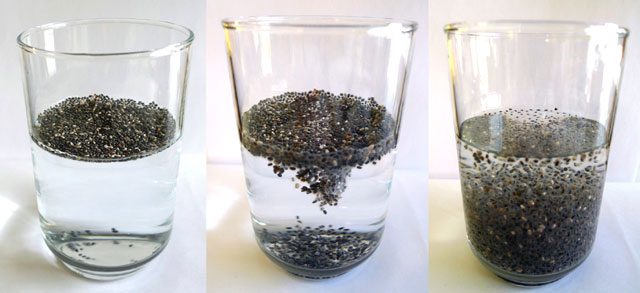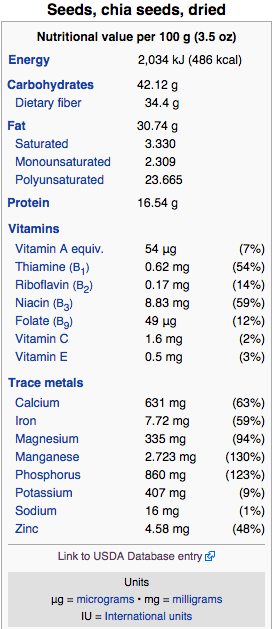For such a tiny seed, it holds a lot of nutrients.
It’s believed that chia seeds were first cultivated by Aztec peoples living in what is now central Mexico. Back then, chia seeds were a dietary staple, believed by some historians to be as popular as maize. Yet chia seeds weren’t introduced to the United States until the 1980s.
In the decade best known for big hair, unbridled banking, and fads of all kinds, you were far more likely to find chia seeds sold alongside mood rings and pet rocks than you were in any grocery store aisle. And that was because without chia seeds, every American’s Chia Pet would have been bald.
Chia Seed Nutrition
But we have only recently begun to understand what the Aztec peoples knew centuries ago—that these tiny little seeds are chock-full of vitamins and minerals.
Because they are so packed with nutrition, chia seeds are growing in popularity with runners, cyclists, and bodybuilders. But you don’t have to be a high-intensity athlete to benefit from chia seeds.
Bodybuilders love chia seeds because, according to Bodybuilding.com, two tablespoons of chia seeds give you:
5x the omega-3 content of 1/4-cup of walnuts.
2x the iron and magnesium of a cup of spinach.
The calcium of 1/2-cup of milk.
The potassium of 1/3 of a banana.
More than 2x the fiber of a cup of oatmeal.
According to RunnersConnect.net, Runners love chia seeds because as little as one tablespoon of chia seeds a day can help runners combat inflammation and also absorb nutrients more efficiently.
And, according to Livestrong, just about everyone should get some benefit from adding chia seeds to their diet, because two tablespoons can give us about 38 percent of the fiber we need each day, which helps us fight high cholesterol, heart disease, high blood sugar, and constipation.
How To Eat Chia Seeds
Eating chia seeds dry is not recommended. As seeds, they absorb lots of water, so they can actually dehydrate you and cause an upset stomach if you eat them without first treating them. Luckily, preparing chia seeds for consumption is a very simple process.
First, scoop about a tablespoon of chia seeds into a bowl or other container. Then pour about a half-cup of water into the bowl. Make sure all the seeds are in the water (they can get stuck on the edge of the bowl) before placing the bowl in the refrigerator. Give the seeds at least a half an hour to absorb the water. They’ll turn into something like a gel. Warning: It will look weird. But, it’s nutritious, and there is barely any flavor to chia seeds. You can mix this gel into smoothies, cereal, granola, or just eat it straight by the spoonful to benefit from all their nutritious glory.
If chia seeds don’t interfere with any medications or allergies, you could soon be adding this simple-to-prepare nutrient powerhouse into your diet!
[Note: Be sure to talk to your doctor before adding chia seeds to your diet, especially if you are taking any medications.]


